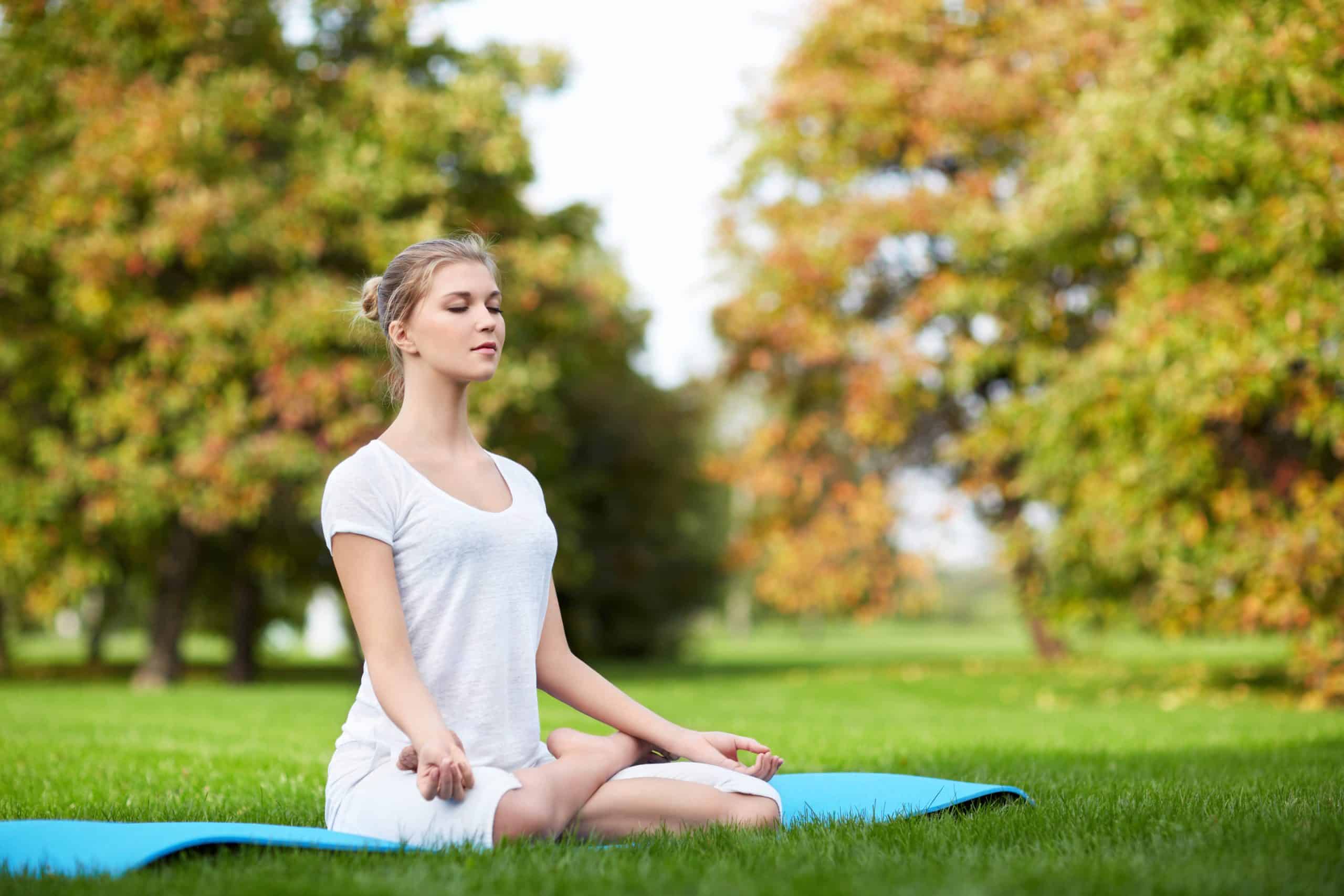What Specific Yoga Asanas Aid in Alleviating Lower Back Pain?

Lower back pain can be a real nightmare, making even simple activities such as sitting, bending, or standing extremely painful. Often, the pain takes a chronic turn, leading to an even more debilitating life. The cure? Yoga. Yes, some yoga asanas, when performed correctly, can provide significant relief from this widespread health condition.
Yoga is a comprehensive mind-body workout that combines reinforcing and stretching poses with deep breathing and meditation. It not only helps to relieve lower back pain but also promotes overall body health. This article will focus on specific yoga poses that help relieve back pain, how to do them, and their benefits. Remember, consistency is key when practicing yoga to alleviate pain.
Lire également : How Can Mindfulness Techniques Enhance Focus and Productivity in Remote Workers?
Understanding the Role of Yoga in Alleviating Back Pain
Before we delve into the specific poses, let’s first understand how yoga aids in alleviating back pain. Yoga is an ancient practice that originated in India about 5,000 years ago. It primarily involves various poses or "asanas," which are known to enhance the health of the spine and the lower back region.
Yoga poses work by stretching and strengthening the muscles supporting the spine. When these muscles are well-developed, they improve your posture and alleviate the pressure on the lower back. Yoga also promotes blood circulation in the lower back region, which aids in the healing and recovery process.
Dans le meme genre : Which Nutritional Deficiencies Are Most Common in Vegan Diets and How to Address Them?
Further, yoga positions that involve twisting the spine help relieve tension in the lower back. The twisting motion increases the flexibility of the spine, improves alignment, and reduces back pain.
Yoga Poses for Alleviating Lower Back Pain
Now that we understand how yoga aids in relieving back pain, let’s dive into the specific yoga asanas that you can incorporate into your daily routine.
Child’s Pose (Balasana)
Child’s Pose is a restful, very calming pose that stretches the lower back, hips, thighs, and knees. It’s a good pose to start and end your yoga session with, as it helps to relax the body and the mind.
To do this pose, start by sitting on the floor with your knees wide apart and your buttocks resting on your heels. Bend forward at the hips and stretch your arms out in front of you on the floor. Rest your forehead on the floor and breathe deeply. Stay in this pose for a few minutes.
Cat-Cow Pose (Marjaryasana-Bitilasana)
The Cat-Cow Pose is a gentle flow of two poses that stretches and strengthens the spine, relieves tension in the lower back, and improves posture.
Begin on all fours with your hands directly under your shoulders and your knees under your hips. As you inhale, lift your chest and tailbone towards the ceiling, letting your belly sink towards the floor (Cow Pose). As you exhale, round your spine up towards the ceiling and tuck your chin into your chest (Cat Pose). Repeat this sequence for several breaths.
Downward-Facing Dog (Adho Mukha Svanasana)
This is an all-over stretch that targets your back extensors, the large muscles that help form your lower back, support your spine, and help you stand and lift objects.
To perform this pose, start on all fours, tuck your toes under, and lift your hips up and back until your body forms an inverted "V." Your feet should be hip-width apart, and your hands shoulder-width apart. Press your palms and heels into the floor, relax your neck, and let your head hang freely. Stay in this pose for a few deep breaths.
Incorporating Yoga into Your Daily Routine
Incorporating yoga into your daily routine can make a significant difference to your lower back health. Even a few minutes each day can help stretch and strengthen the muscles, relieve tension, and reduce pain.
Begin with the three poses mentioned above, and gradually add more as your flexibility and strength increase. Always remember to move slowly and gently into and out of the poses, paying attention to your breath and how your body feels.
The Takeaway: Yoga for Lower Back Health
Lower back pain is a common issue that many people grapple with. However, by incorporating specific yoga asanas into our daily routine, we can not only alleviate this pain but also improve our overall health and wellbeing. It’s key to remember that yoga is not just about the poses but also about deep breathing and mindfulness. So, as you perform these poses, remember to breathe deeply, be mindful of your body, and most importantly, enjoy the process.
Yoga Versus Other Physical Therapy for Lower Back Pain
Before deciding on which approach to take for lower back pain relief, it’s worth considering how yoga compares to other forms of physical therapy.
Physical therapy is often recommended as a non-invasive and effective treatment for chronic low back pain. It involves specific exercises that target the affected area, aiming to reduce pain and improve mobility. While yoga and physical therapy share similarities, yoga brings a unique holistic approach by combining physical poses, conscious breathing, and a sense of mindfulness to the healing process.
Yoga poses or asanas are designed to stretch, strengthen, and balance all areas of the body, promoting overall health and well-being. The combination of these poses can help improve flexibility, build muscle strength, promote better posture, and most importantly, alleviate lower back pain.
Breathing exercises in yoga, known as pranayama, are also fundamental in managing pain. Deep and conscious breathing can trigger a relaxation response, reducing stress and tension in the muscles, often a significant contributor to lower back pain.
Moreover, yoga encourages mindfulness. Practicing mindfulness can change how you perceive pain, making it more manageable. It fosters a deeper awareness of the body, allowing you to notice and address tension or pain in your lower back quickly.
In comparison, while physical therapy can effectively alleviate pain, it often focuses more on the physical aspect and less on the mental health side.
Katie Thompson, a renowned yoga instructor, validates this by stating, "Yoga helps you become aware of your body and its patterns, which can lead to big changes in your posture and in your pain levels."
Hence, while both yoga and physical therapy can be beneficial in alleviating lower back pain, yoga’s holistic approach can lead to longer-lasting pain relief and overall well-being.
The Impact of a Consistent Yoga Program on Lower Back Pain
Sticking to a consistent yoga program can have profound effects on lower back pain. Consistency in practice is a crucial element in seeing and experiencing the benefits of any yoga regimen.
A study medically reviewed and published in the Annals of Internal Medicine found that people suffering from chronic low back pain experienced a significant reduction in pain and improved their back function by practicing yoga regularly.
One aspect that makes a yoga program effective is its adaptability. Unlike some exercises which can be strenuous, yoga can be modified to meet individuals’ needs at different levels of fitness or pain stages.
So how can you maintain consistency in your yoga program? Firstly, find a routine that suits you. This might be practicing at a particular time of day when you’re most energized or relaxed.
Secondly, make sure you enjoy the process. Yoga isn’t all about achieving perfect poses but rather understanding and appreciating your body’s journey towards better health. Enjoyment in practice will naturally encourage consistency in your yoga routine.
Lastly, remember to be patient with yourself. Progress might be slow initially, and that’s okay. What matters is the gradual cultivation of strength, flexibility, and decreased pain over time.
Conclusion: Lower Back Pain and the Power of Yoga
Lower back pain can be a significant hindrance to daily life and mental health. However, yoga provides a holistic approach that not only relieves pain but also fosters overall physical health and mental wellbeing.
Yoga poses such as the Child Pose, Cat-Cow, and Downward-Facing Dog can significantly alleviate lower back pain. A consistent yoga program can also provide long-lasting pain relief compared to other forms of physical therapy.
However, it’s essential to keep in mind that yoga is not a quick fix. The key is consistency and patience. With regular practice, you can create a strong, supple back and enjoy a life free from chronic lower back pain.
So, unroll your yoga mat and embark on this healing journey. Remember, the goal is not to perfect the pose but to reap the benefits that come with the practice. Yoga is a journey, not a destination. Enjoy the process, and your lower back will thank you.
